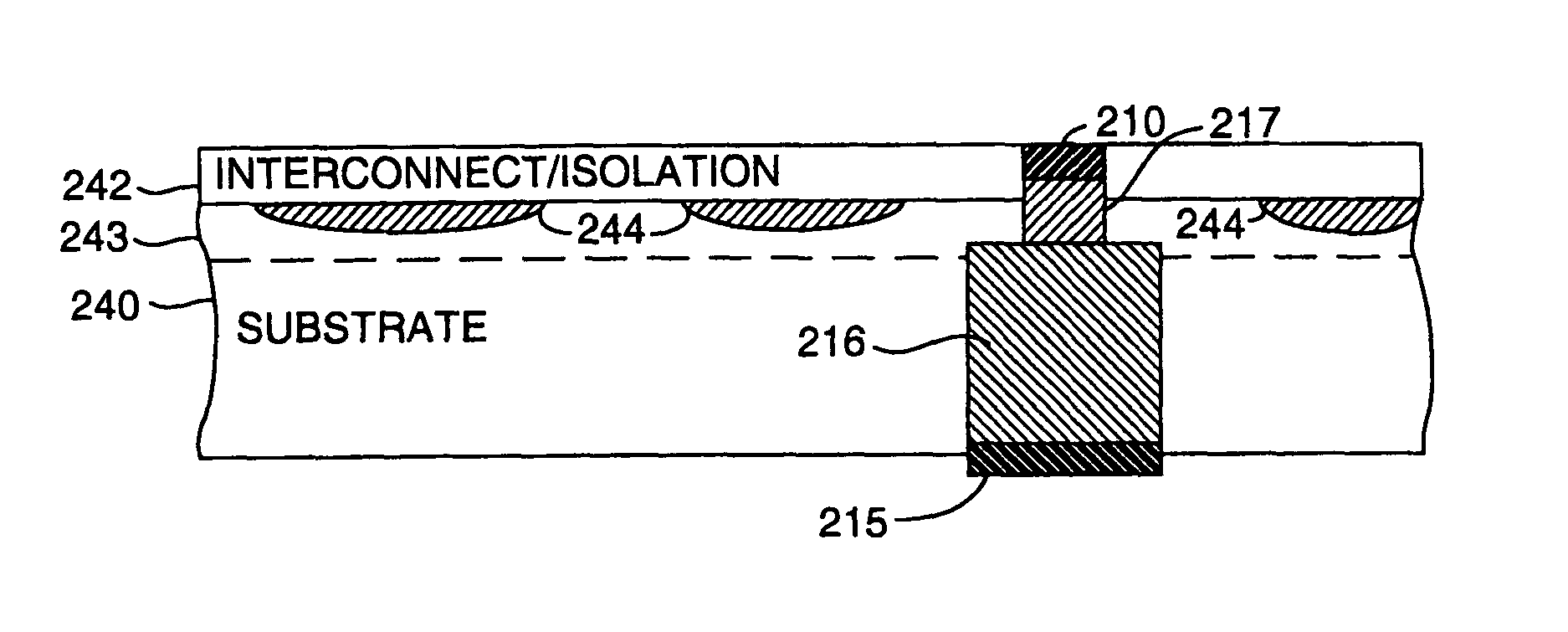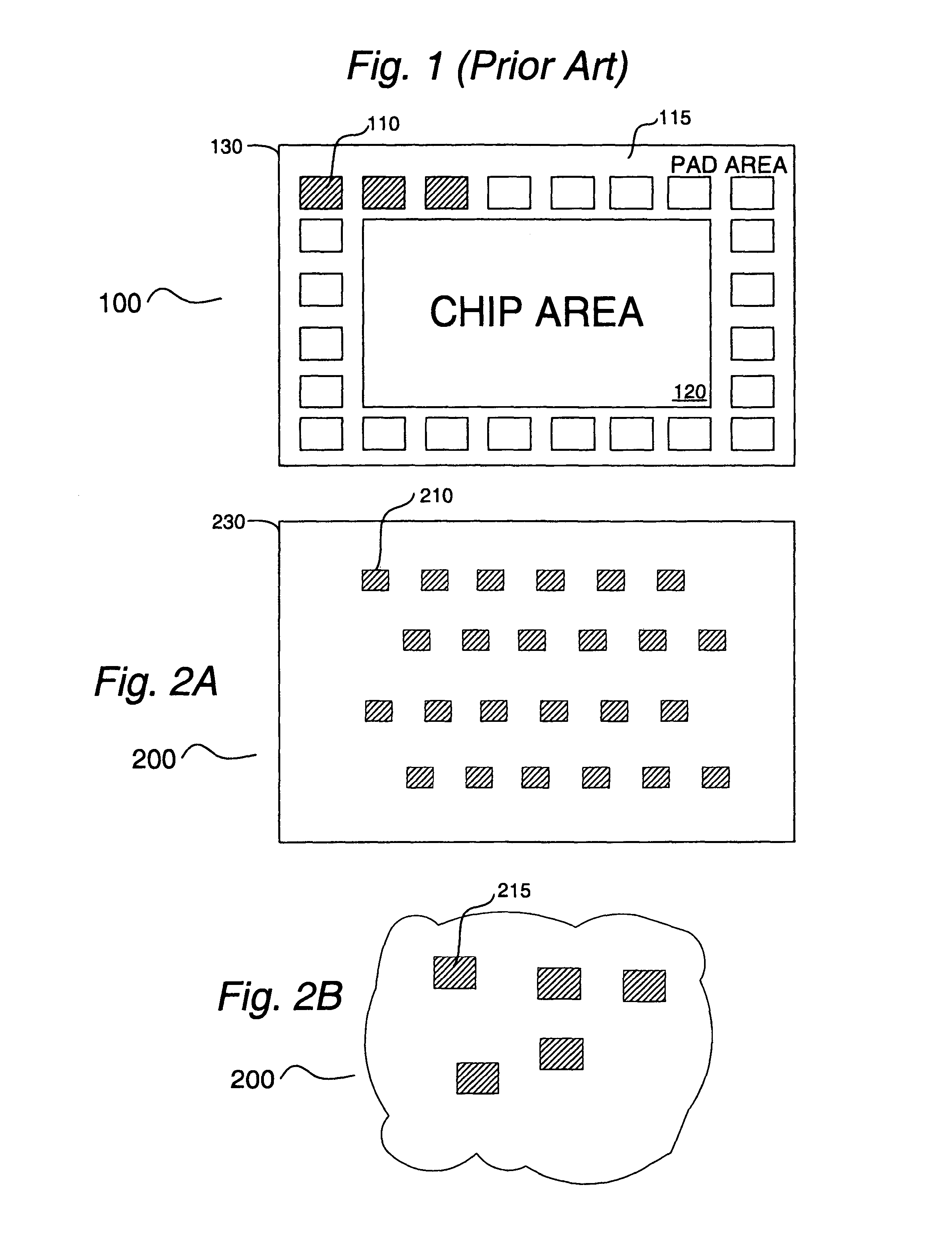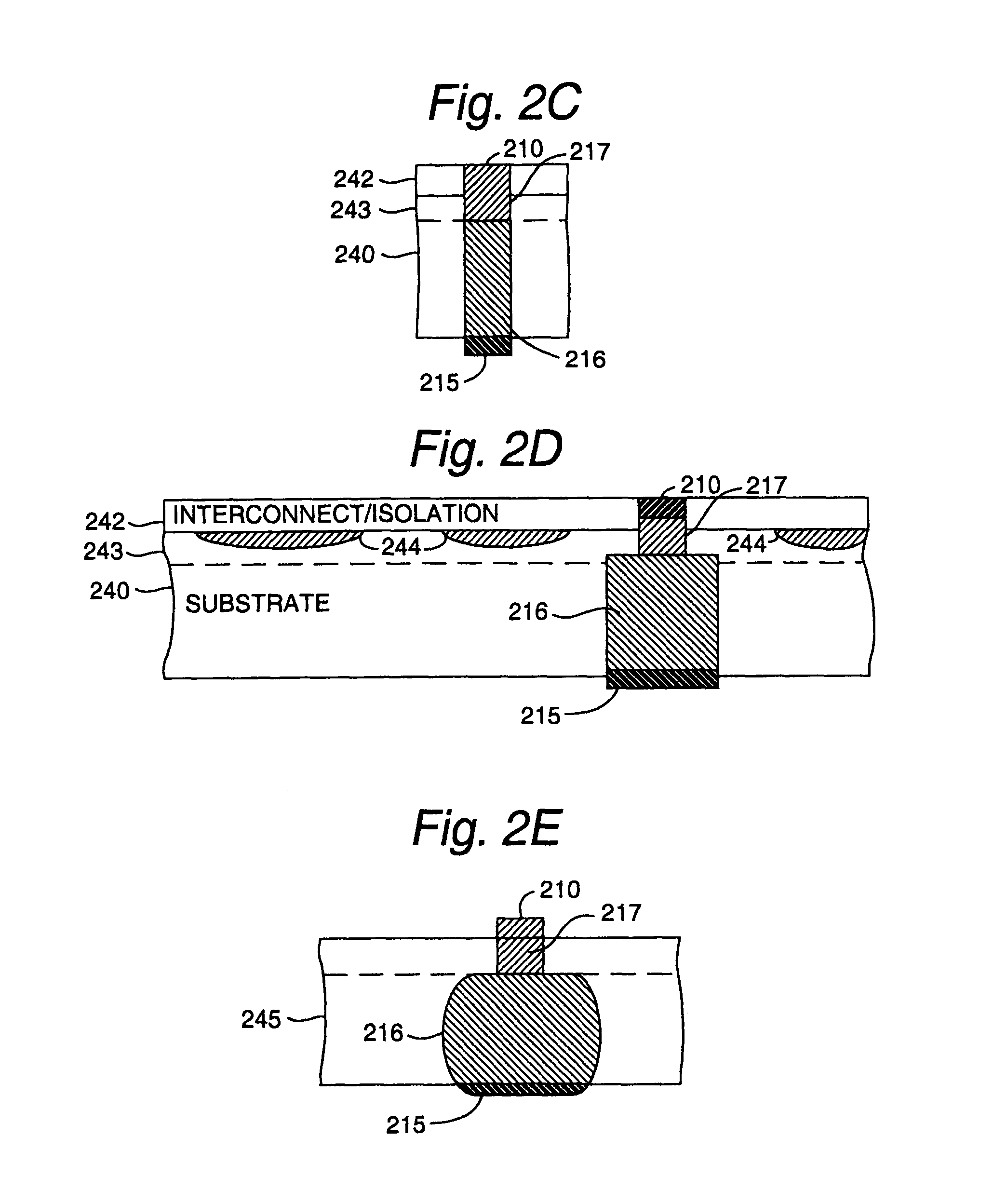Intermediate structure for making integrated circuit device and wafer
a technology of integrated circuit devices and wafers, which is applied in the direction of semiconductor devices, semiconductor/solid-state device details, electrical devices, etc., can solve the problems of limiting the size of the area that can become small using conventional processes, high processing costs, and poor yield, so as to reduce the cycle time, and reduce the cost
- Summary
- Abstract
- Description
- Claims
- Application Information
AI Technical Summary
Benefits of technology
Problems solved by technology
Method used
Image
Examples
Embodiment Construction
[0032]A top view of an integrated circuit (IC) 200 formed in accordance with the present invention is depicted generally in FIG. 2A. Such circuit 200 includes a die 230, which is formed along with a plurality of other die (not shown) using conventional masking, deposition and etching operations performed on a silicon wafer during a semiconductor manufacturing process. For ease of reference and comparison with prior art IC 100, a series of top surface interconnect nodes 210 are depicted as well. Such top surface interconnect nodes 210 are located on a top surface of die 230, and are distributed according to desired signal connections with electronic circuits formed in (and on) die 230. Top surface interconnect nodes 210 are formed from such conventional conductive materials such as aluminum, gold, or some other suitable low resistance material.
[0033]In a preferred embodiment, top surface interconnect nodes 210 are preferably much smaller than comparable I / O bonding pads of prior art ...
PUM
 Login to View More
Login to View More Abstract
Description
Claims
Application Information
 Login to View More
Login to View More - R&D
- Intellectual Property
- Life Sciences
- Materials
- Tech Scout
- Unparalleled Data Quality
- Higher Quality Content
- 60% Fewer Hallucinations
Browse by: Latest US Patents, China's latest patents, Technical Efficacy Thesaurus, Application Domain, Technology Topic, Popular Technical Reports.
© 2025 PatSnap. All rights reserved.Legal|Privacy policy|Modern Slavery Act Transparency Statement|Sitemap|About US| Contact US: help@patsnap.com



